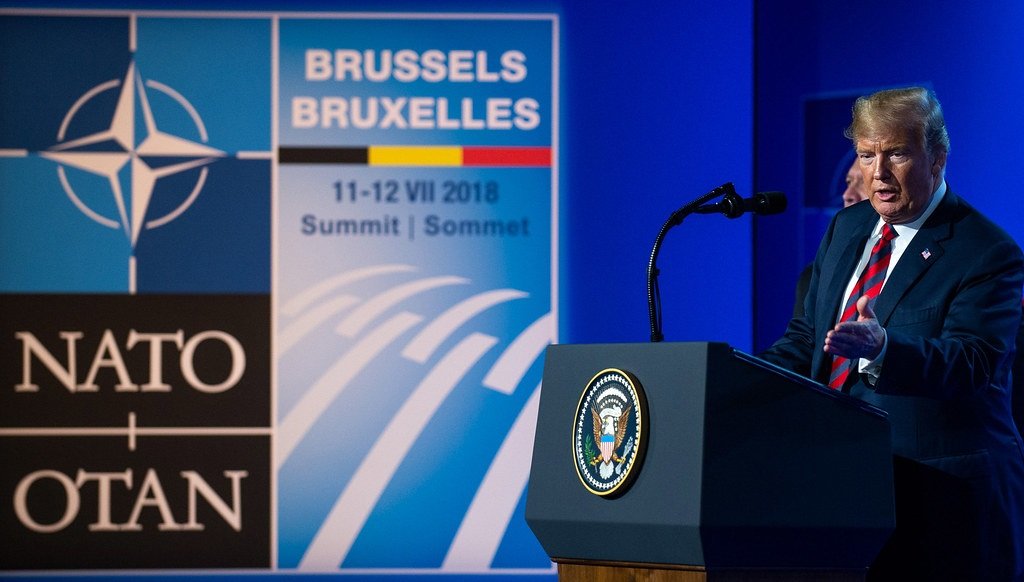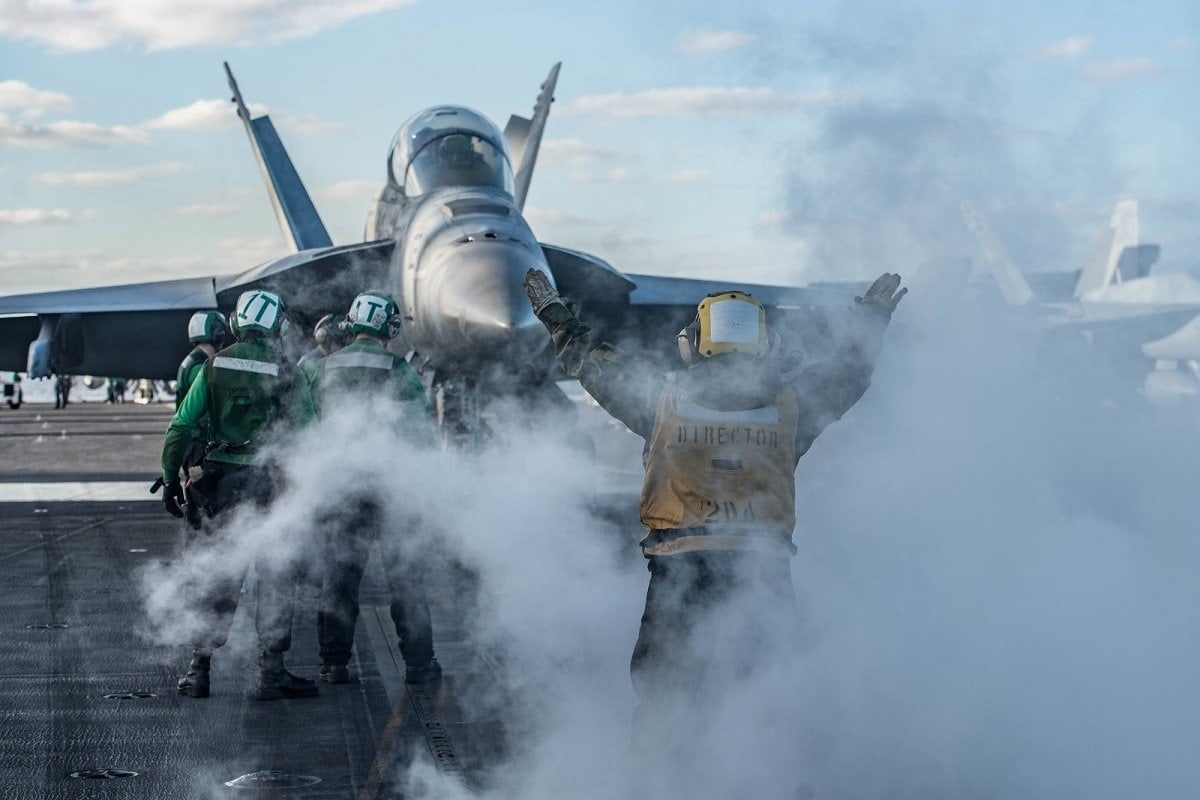To securocrats the world over NATO has a formidable reputation. Having faced down the Soviet menace in the Cold War, for a time it became a powerful instrument of U.S. and Western foreign policy objectives. Though the organization speaks of values and maintains a defensive posture, the reason East European countries rushed to join it was because NATO put the ‘hard’ into ‘hard power’. It is no wonder, therefore, that when people speak of new defensive arrangements in Asia to manage China’s rise, NATO is the exemplar they all reach for, or the crafting of a so-called Asian NATO.
The difficulty faced when transposing a Cold War bastion onto the complex and developing political topology of the Indo-Pacific, however, is getting the shoe to fit.
NATO in this context represents that rare thing, an international organization that worked. Beyond that, it is widely misunderstood. Most comparisons focus on the kind of organization NATO is today, and suggest that although some of what it does might usefully translate into the region, it’s hard to build an alliance that dense and hierarchical without clearer strategic alignment. This would certainly be a challenge but one which could resolve itself as the political rivalries condense out of the fog of strategic competition. Instead, the real problem lies in U.S. strategic confusion.
NATO Origins
Reading NATO press briefings today involves wading through endless corporate sounding jargon about cooperation and shared values, but this masks serious disputes over burden-sharing and strategic orientation. It doesn’t help that the EU is convulsed with doubts about its own future, nor that NATO is divided over exactly what threat they are addressing. It hasn’t collapsed yet because it is an effective framework for defense cooperation, and the specter of Russia hasn’t gone away entirely. Equally, the calendar of summit meetings would be a little emptier without regular bunfights over the defense budgets of 2nd and 3rd tier European ‘powers’. But despite its increased size, NATO’s heyday is long gone.

A “Soviet Big Seven” threats poster, displaying the equipment of the militaries of the Warsaw Pact. Image: Creative Commons
The reason for this is simple; it was once a standing counter-offensive, kept in a state of constant readiness by the imminent threat of invasion. It was not simply an international organization, it was a command structure to which members subordinated the full extent of their capabilities to play their part in an overall battle plan. Many members did not even maintain the full spectrum of defense capabilities, but made a specific contribution to NATO instead; Norwegian submarines, for example, and German mobile anti-tank defenses etc.
NATO has also been mythologized as a collective defense ‘all for one and one for all’ type of arrangement, but outside of a putative Soviet invasion, this was simply not the case. In legal terms, the fabled Article 5 declaration meant NATO members automatically agreed the specified attack referred to authorized a response in ‘self-defense’ in international law (the only legitimate use of force outside of UNSC Chapter VII authorization), which meant they could immediately provide assistance without further internal or external discussion, but it did not oblige members to assist other members. Indeed the rock of credibility upon which NATO was built was the perceived willingness of Washington alone to send in the marines. The Fulda Gap was not going to be defended by Spain.
Much was made of NATO’s invocation of Article 5 in the aftermath of September 11th, 2001. It was said that this showed European solidarity with their American ally, and was accompanied by troop commitments to Afghanistan. What is less often acknowledged is that when the U.S. Secretary of State Colin Powell was first consulted about invoking Article 5 he was confused and confessed he hadn’t thought about it. Furthermore, the offer of assistance was made conditional on the U.S. proving that it was not domestic terrorism, then when the assistance came, the alliance was divided with some offering combat troops, while others preferred to stay out of the fighting. In retrospect, the aftermath of 9/11 revealed less about the continued relevance of NATO than the search for a new mission in a Post Soviet world.
NATO Today
That search continues. Given, however, the prestige of the organization, and its narrow defense focus, it does serve as a useful platform for training and the sharing of technology and capabilities. It also offers its members the obvious strategic benefit of a standing alliance to call upon in extremis, but where once it had political coherence and a shared outlook, combining 6 members of the G7 and comprising the main force of ‘the West’, that is no longer the case. Indeed, NATO is more often spoken of today as a kind of metaphor for U.S. overseas engagement, signaling either a continued commitment or the threat of retreat.
Nevertheless, NATO is still seen as a model of effective collective defense, and drawn upon as an appropriate example for meeting an emerging threat in Asia, hence the extensive discussion about an ‘Asian NATO’. But while NATO was formed by firm allies in the aftermath of a devastating global conflict in which trust had been earned on the battlefield, and found purpose against an aggressive and expansionist revolutionary power, neither of these conditions apply in Asia. China is increasingly being identified as a competitor to the U.S. and a threat to some states in the region, but many of these states have only limited experience of defense cooperation, have a history of balancing between competing great powers, and much to lose by taking sides in a geopolitical competition they have historically been merely subject to rather than participants in.

Press conference by US President Donald Trump at the NATO Summit in Brussels.
Moreover, NATO had-at the outset-a clear delineation of spheres of influence and hard borders to make an uneasy peace possible. By contrast in Asia, any new commitment to collective defense would immediately be considered an escalation by China, whether this is expressed around some rocky outcrop in the South China Sea, or a glacial lake in the Himalayas. In other words, China has so far positioned itself as a standing counter-offensive to any encroachment on what it terms its ‘core interests’. Whether China would respond militarily to an assertive ejection of its fishing fleet, or a repositioned Indian battalion is a matter of conjecture, but only a fool would rule it out.
Indeed, in its firmness of resolve, China has a better claim to have learned from NATO than the assorted Asian states that find themselves under pressure from China. On that question, it is the U.S. that is playing catch up. And here is where the talk of an Asian NATO must be brought into question. Because aside from all the complexities of Asian security cooperation that would bedevil any new security alliance, the key objective would be to establish effective deterrence against the Chinese military and political pressure. On any assessment that will be neither easy nor quick.
Hawks vs Doves
Had President Trump won reelection in November, it is quite likely we would have seen further progress in strengthening the quadrilateral security dialogue known as ‘the Quad’. Trump has significantly increased the U.S. naval presence in the region, deepened the alliance with Japan, improved relations with India to such an extent that they now have a security dimension, and all the while Australia has adjusted its strategic orientation away from accommodation with China. Trump and U.S. Secretary of State Mike Pompeo have also given much clearer expression to the ‘Indo-Pacific’ as a strategic concept calibrated to respond to Chinese political and economic outreach.
Since the election, however, there has been very little emerging from Biden foreign policy picks, Tony Blinken and Jake Sullivan, but there is a strong suspicion that they will be less hawkish, leaving Asian countries once again unsure of U.S. commitment in the region. Recent statements have avoided mention of either the Quad or the ‘Free and Open Indo-Pacific’, regarded by some as hostile to China. This is consistent with earlier assessments of Biden’s presumed national security priorities. Inevitably there will be the talk of ‘balancing China’ and ‘building consensus’ but the problem isn’t really down to what the U.S. says, so much as what it does, and changing the language will itself be seen as soft-pedaling in Asia, just at a time when the U.S. still has a lot of catching up to do.

Bilateral meeting between NATO Secretary-General Jens Stoltenberg and US Vice President Joe Biden in 2015.
Most importantly the last few years have shown that many states in Asia are looking to strengthen their collective defense capabilities. Some, like Japan, are just getting on with it, others like the Philippines are still in two minds. China has squandered a lot of goodwill through its increasingly assertive demands meaning the U.S. has found Trump’s more confrontational approach to China welcomed throughout the region, if rather quietly. The appetite for an organization that might eventually become an Asian NATO is clearly present but not if the U.S. itself can’t make up its mind on such abstruse questions as to whether China is a ‘competitor’ or a ‘rival’. No one will put their head above the parapet if they think the U.S. might walk away.
INPATO?
Although the comparison with NATO may be overdone, there is clearly an appetite for an organization, maybe not called an Asian NATO, but call it INPATO, that ensures regional security cooperation over a wide range of distinct challenges, all emerging from China. The tactics China pursues to put pressure on small neighbors are well understood, but countering them is inevitably difficult for smaller states on their own. Like NATO in Europe, however, the critical ingredient of a nascent INPATO is a strong, committed U.S. ready to lend support even up to military assistance for those states unable to do so alone. In Europe, the longstanding perception was that the US was much more assertive than some NATO allies who often pursued more emollient policies towards the Soviet Union. This was enormously useful to the coherence and effectiveness of NATO’s deterrence.
In establishing such an organization like an Asian NATO the first difficulty would lie in persuading potential allies that U.S. intentions are sincere and will outlast the next electoral cycle. In this respect Biden’s team have started off on the wrong foot with talk of alliances and cooperation when all they had to do was build on the good progress Trump and Pompeo have made; stressing the Indo-Pacific, arranging another carrier group to visit Vietnam, joint coast guard patrols with Japan, further technical assistance to India, etc. Nevertheless, the opportunities for further cooperation remain as long as the new U.S. administration understands what is expected of it. Unquestionably, an organization like INPATO would face instant and voluble hostility from China, who would seek opportunities to undermine it from the outset, singling out Australia for further punishment beatings on trade and sending fleets of fishing vessels into Japanese waters, but this would be the necessary next act in establishing new facts on the ground (or in the sea).
The irony is that everyone looks to NATO for example, and measures seriousness in U.S. foreign policy debates by reference to relative commitments to it, when NATO has effectively lost its enemy and not yet found a convincing role, while in Asia the role is clear enough, though the U.S. seems unsure if it wants to play its part. Trump did a good job persuading regional states that he was serious and shared their concerns about a newly assertive China. The Biden transition has so far only served as a reminder of how fickle the U.S. can be. In any event, the complex problem of an Asian NATO collective defense organization will remain complex, but if the U.S. equivocates now it could take years to recover the momentum it currently has.

